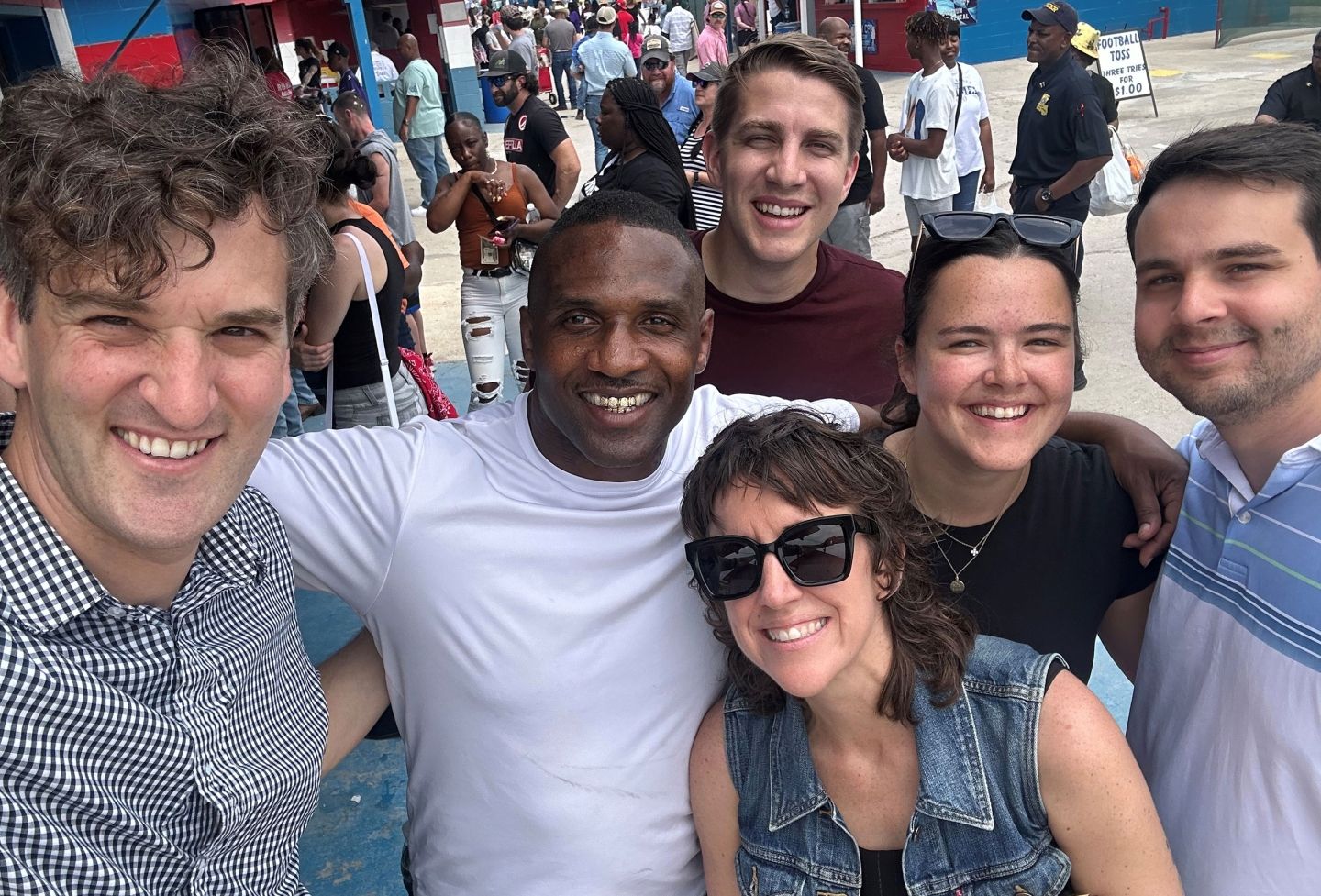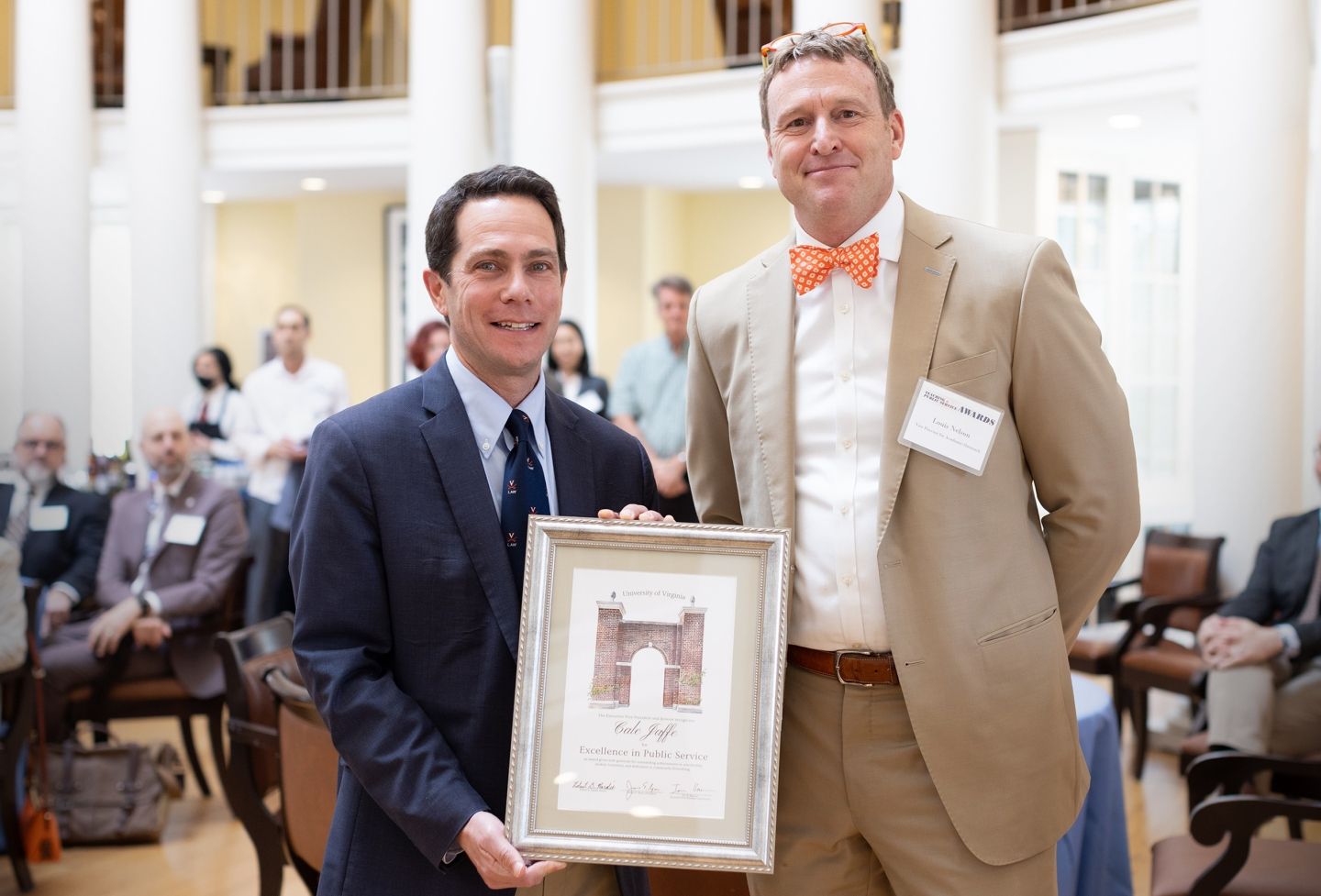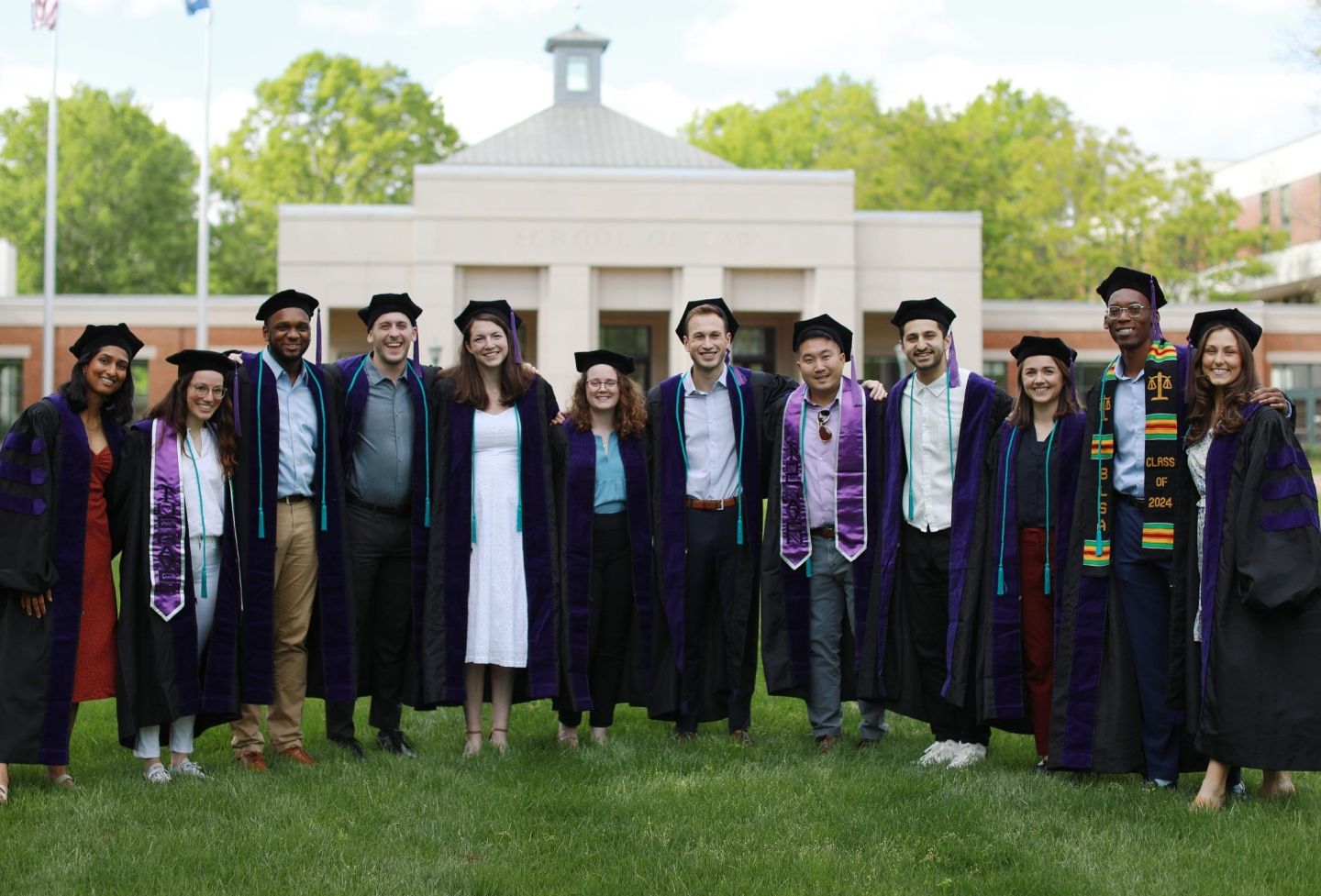Symposium on International Watershed Management Reveals Need for Public Participation

Public participation in watershed management may be crucial to balancing a region's competing demands for water use and the desire to preserve the environment, said officials and scholars at "Improving Public Participation and Governance in International Watershed Management," an international symposium held April 18-19 at the Law School.
Participants from five continents gathered to discuss how to get the public involved in management of large watersheds that cross national boundaries. Because they lie within the jurisdiction of several nations, these watersheds pose difficult management challenges, and people living along these international watercourses may have little or no voice in decisions that affect them, said law professor and symposium organizer Jonathan Cannon.
"There are more robust versions of public participation" than merely asking the public to comment on plans, Cannon said in his introduction to the symposium's first panel. "In these more robust versions there are opportunities for the convergence of public participation and governance in meaningful ways. Our goal is to explore those opportunities in the management of transboundary resources."
At the conclusion of the symposium, Cannon observed that although the level and quality of public engagement in some of the world's great watersheds are encouraging, conditions essential for strong public participation do not exist in others. "There is still much to be done to establish a democratic footing for watershed management worldwide."
Ecological Disasters Increased Public's Role
Increasing public involvement in watershed planning and lessening reliance on topdown, regulation-based approaches may yield better results and avoid future lawsuits, panelists said during "The Role of Public Participation in Decision-making: Essential or Dispensable in Watershed Management?", but participants disagreed about the role of federal environmental regulations in sparking the public's activist response.
Columbia law professor Bradley Karkkainen argued that watershed management and ecosystem preservation is moving toward a post-sovereign model that doesn't fit the traditional model of federal- and state-enforced regulations. He said there are limitations to such a state-centric approach, especially when ecosystems are a "mismatch to territorially defined political boundaries," such as the Great Lakes.

Furthermore, regulations "tend to be negative more than affirmative" since it's easier to craft rules that ban actions rather than add incentives for positive responses. As a result of a better understanding of ecosystems, scientists know they are more complicated and sensitive than previously thought, hence the "growing interest … in integrated and adapted ecosystem management." A "crisis of state competence" to deal with ecosystems has supported the case for what Karkkainen called "post-sovereign governance" of the environment. Both state parties and non-state actors now are involved in research and monitoring of ecosystems and improving scientific models, in what appears increasingly to be a non-rule-based way.
He pointed to the "distinctive set of hybrid governance arrangements" in leading models like the Chesapeake Bay, the Great Lakes and the Baltic Sea., which share an ecosystem focus, integrated/adaptive management, a broadly collaborative approach, and an open-ended commitment to do whatever it takes to preserve the ecosystem.
Karkkainen noted that such an approach is not yet widespread, and it was "premature to declare them an unqualified success," but added that the limits of the traditional model "have been fundamentally exposed."
"These new transboundary, post-sovereign governance arrangements represent the future," he said.
University of Colorado law professor David Getches noted that the United States has only recently invited the public into watershed management decisions, after realizing that excluding the public leaves the government vulnerable to lawsuits.
"In the United States today, we find ourselves in an era of rethinking decisions that were made 30 or even 100 years ago," Getches said — decisions made with one goal in mind, beginning with the Jeffersonian ideal of fertilized fields for agriculture, and later support of expansion into the West. Dams, for example, were once largely a matter of politics, and experts were brought in solely to build the dam itself, not examine its effects on the environment. "Feasibility meant technical feasibility," he said, and states were in competition over which could pull in the most federal largesse.
Getches said we are living with the consequences of these decisions today. He pointed to the Colorado River, with 10 major dams — almost all federally financed — used for electricity outside the river's watershed. Beginning in Colorado, by the time it reaches Mexico the river is depleted to just a trickle. The salmon stock, once abundant, is now endangered, and most of the native fishes are gone. It's likely the political players involved knew about some of the dam's effects ahead of time, but "there was no one at the decision-making table to talk about these consequences."
Passed in 1969, the National Environmental Policy Act (NEPA), which requires a fuller analysis of the environmental impact of such projects, was too late to stop most dams from being built. NEPA's requirement for public participation for years meant collecting the public's comments and appending them to the back of reports.
What changed the way the government tackles environmental problems, Getches said, was the citizens who brought lawsuits against the government. "Litigation became a forceful but blunt instrument of public participation," he said. "It's lawsuit avoidance that has caused us to do a better job."
Now there is more public participation on a local level, from groups of local and state officials, fishermen, environmental groups, Native Americans and businessmen, all trying to rectify problems inherited from an earlier generation. Such groups were heralded as "inspiring" and "spontaneously collaborative," and only recently have scholars dared to criticize them. Critics have "started to help raise and answer questions about how to make collaborative efforts more effective." At Colorado's law school, scholars have begun to document what does and doesn't work. Getches said small group efforts should have a clearer focus than to "make the river better," committed participation, strong leaders, a sound structure and process with ground rules, and technical capacity.
"The mystique of spontaneity is probably overstated," he said. "Nearly all of the groups that have accomplished anything have been coerced by tough federal laws," such as the Endangered Species Act.
The challenge, Getches alleged, is how to institutionalize a robust system of public participation to deal with the issues.
"This effort is messy and chaotic. Going beyond the experts is tough.
"Society can choose to pay now or pay later," he said. "Working upfront to achieve comprehensive public participation will create a better decisionone that's less costly to society in the long run."
Offering a perspective from the southern hemisphere, Anthony Turton, head of the African Water Issues Research Unit (AWIRU) at Pretoria University, spoke on how such issues are being dealt with in South Africa and Africa in general. Turton said there were two distinct phases of what he called the hydro-social contract — one he called Hobbesian (more government-controlled), and the other based on Locke — the latter a "far more democratic form of water management." Turton said African water administration lacks adaptive management. Sovereignty is also a problem in Africa: some countries are in conflict, others, like Namibia, are only 10 years old. Without established sovereignty, it is difficult to build trust between countries.
"In the South we don't have enough government," said Turton, a founding member of the Universities Partnership on Transboundary Waters.
As a result, NGOs need to engage African governments rather than challenge their authority, he said, and leave room for civil society to play a role.
Cultural differences and mistrust can make an impact in water planning, Turton said. In one example he offered, an NGO opposed a dam and tried to raise dissent among the citizens, but instead offended their traditional African customs. The citizens rallied around the king in support of the dam.
Karkkainen later added that highly capable states tend to drive water policies within their region. Where states are not capable, watersheds can't be managed solely through the efforts of those states.
International Financial Institutions May Foster Public Involvement

International financial institutions like the World Bank and the African Development Bank (ADB) can play a key role in improving public involvement in watershed planning, according to participants in the panel, "Public Involvement in International Financial Institutions," but frustration over international involvement in local matters was also apparent in the audience.
Although water projects make up only a percentage of the billions loaned by the World Bank to developing countries each year, "by far the projects that get the most attention are large-scale hydro projects," according to World Bank lawyer Charles DiLeva. In the United States 75-80 percent of the hydro capacity has been developed, but in Africa that figure is at 5 percent, DiLeva said, noting the double standard implicit in scrutinizing the water management decisions of Africa. Today funding for large-scale projects comes from multilateral institutions that have environmental concerns, he said, and the construction is carried out through private entities. DiLeva said World Bank activities typically focus on the sensitive issues that private companies don't finance.
Hydro projects are "all somewhat unique," he said — some hydro projects are built to add needed revenue to nations' coffers. Although built in Laos, one dam will send energy to neighboring Thailand. A dam is being built in Paraguay that will meet 15-20 percent of the energy needs in Argentina.
The World Bank requires such hydro projects to be prepared in consultation with the public, and requires contracts to be written in the local language.
"We are making great strides in making the public get involved," he said, but the Bank also lacks effective indicators that such efforts work. The World Bank has had an inspection panel since 1993 that is effective at fact-finding, but does not have the power to impose sanctions. The Bank only needs two people to file a claim that they are being adversely affected by the bank's projects for the inspection panel to get involved.
With 53 shareholding countries in Africa, and 24 in the rest of the world, the African Development Bank (ADB) has continued to develop a policy of public participation when it loans funds for water management projects such as dams, according to the ADB's Aboubacar Fall. Before the ADB guidelines were set up, local committees were not well monitored and lacked requirements to select a diverse range of local participants.
The bank's new policies make public participation central and its role more clearly defined, Fall said. In 2000 the bank implemented a policy to deal with citizens displaced by dam building, and is now in the process of preparing a policy to set up an inspection panel to review the bank's decisions. ADB is also instituting loan terms that require borrowers to show they are complying with public participation guidelines.

Sometimes even motivating the public to get involved in water management can prove challenging, as Pablo Gonzalez of the Organization of the American States (OAS), discovered. OAS worked with the United Nations Environment Programme (UNEP) and the Global Environment Facility on a project exploring how best to invest the public in local water projects. The poor communities they worked with — such as Costa Rica and Nicaragua — see international intervention as an opportunity to fulfill their needs. Getting past cultural barriers, such as the varying roles of women, to get everyone involved in the decision-making process also proved difficult.
Efforts to get the Costa Ricans and Nicaraguans involved in planning for the San Juan River Basin included demonstration projects and basic studies, public participation workshops, bulletins, web sites, festivals and contests. Gonzalez said demonstration projects and basic studies proved useful in empowering stakeholders. Building ownership "is a huge step forward for the basin." He found that the stage of organization at the local level played a key factor in how the public would benefit from participation.
"Little by little they got involved" in Costa Rica, he said. "Now they are executing their own projects."
While many international organizations intervene to help improve public involvement, several saw the need for guidelines on how to do so. UNEP North America regional director Brennan Van Dyke outlined the efforts of the World Commission on Dams (WCD), launched in 1998 to develop guidelines and criteria for building dams and reviewing their effectiveness. NGOS, the private sector, and the public were involved in the WCD's report, which includes case studies and recommendations for dam development.
"The report itself highlights the importance of public participation in the development of policy in dam projects," she said.
There are over 45,000 large dams around the globe, said Van Dyke, and it is rare they escape controversy, since in the past they have proven to benefit the rich and hurt the poor.
UNEP formed the Dams and Development Project after the report's release. Even if groups developing dams are not willing to use the WCD guidelines, UNEP tries to work with them to make stakeholder participation part of their regulations.

When the floor was opened to questions, audience member John Ntambirweki, a panelist in Saturday's "Public Involvement in Transboundary Watercourses in Africa," accused the World Bank's inspection panels of not considering the water needs of the people. The panel would say "you don't need this project," he said, but "we need to divert water, stick it where it's needed." Ntambirweki, a faculty member at Makerere University in Uganda, said dams are "necessary to divert water for our population centers … if you don't divert water in South Africa, the population centers will be thirsty."
DiLeva responded that "there's this sense of unfairness because it's our country and our project." He noted one case in Romania where the Romanian government was angry that the World Bank had listened to complaints from ethnic Hungarians about the sustainable forestry plan the Bank and the government were working on. He noted that if the Ugandans could rely on the Ugandan court system to deal with the sensitive issues surrounding water development, the World Bank intervention would not be needed.
Another audience member asked why there is World Bank money available to build dams, but no money to fund education and outreach efforts.
DiLeva responded that it's difficult to get a government to borrow money to fund education efforts, since it puts them further in debt.
Success of Management Efforts Depends on Conditions that Vary Widely Among Watersheds
Three panels addressed actual experiences in managing large watersheds around the world — from the Mekong River in Asia, to the Danube in Europe, the Niger and the Nile in Africa and the Great Lakes Basin in North America. Panelists generally agreed that effective public participation contributes to efficient and fair decisions. But they also concluded that the conditions necessary for effective participation were more present in some places than in others. These conditions included stable democratic institutions, a high level of public awareness and education about the issues and a level of economic well-being that enables the public to get involved. Discussion focused not only on techniques of encouraging public participation but also the need for the developing world to create conditions under which meaningful participation can occur. In closing remarks, Joseph Dellapenna, a Rapporteur of the Water Resources Committee of the International Law Association, also urged the importance of emerging international norms in securing public involvement in transboundary resources management.
Founded in 1819, the University of Virginia School of Law is the second-oldest continuously operating law school in the nation. Consistently ranked among the top law schools, Virginia is a world-renowned training ground for distinguished lawyers and public servants, instilling in them a commitment to leadership, integrity and community service.


